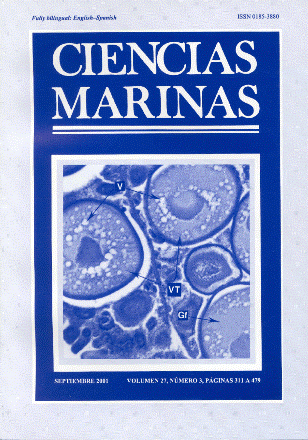Influence of benthic regeneration on the biogeochemical cycle of CO2 in littoral ecosystems
Main Article Content
Abstract
The benthic fluxes of inorganic carbon were measured in the Bay of Cádiz, located in the SW of the Iberian Peninsula (Southern Europe). The values measured ranged between 74 and 224 mmol m–2 d–1, which are higher than most reported fluxes. They were linearly correlated with the organic carbon content in surface sediments. For the Bay of Cádiz, a carbon budget is proposed. It was determined that 53% of the benthic inorganic carbon production is used by the phytoplankton of the area, and 43% is exported by tides to other littoral areas. The rest of the benthic production, together with direct emission of CO2 from intertidal sediments to the atmosphere, yielded a maximum net flux of 5.6 · 108 mol C y–1. If extrapolated to coastal areas globally, these values are particularly significant. Taking 44 mmol m–2 d–1 as an average value for benthic fluxes of dissolved inorganic carbon, it is estimated that the benthic CO2 production by coastal ecosystems is about 4.2 · 1014 mol y–1, similar to the estimated annual CO2 emissions to the atmosphere from the burning of fossil fuels.
Downloads
Article Details
This is an open access article distributed under a Creative Commons Attribution 4.0 License, which allows you to share and adapt the work, as long as you give appropriate credit to the original author(s) and the source, provide a link to the Creative Commons license, and indicate if changes were made. Figures, tables and other elements in the article are included in the article’s CC BY 4.0 license, unless otherwise indicated. The journal title is protected by copyrights and not subject to this license. Full license deed can be viewed here.

